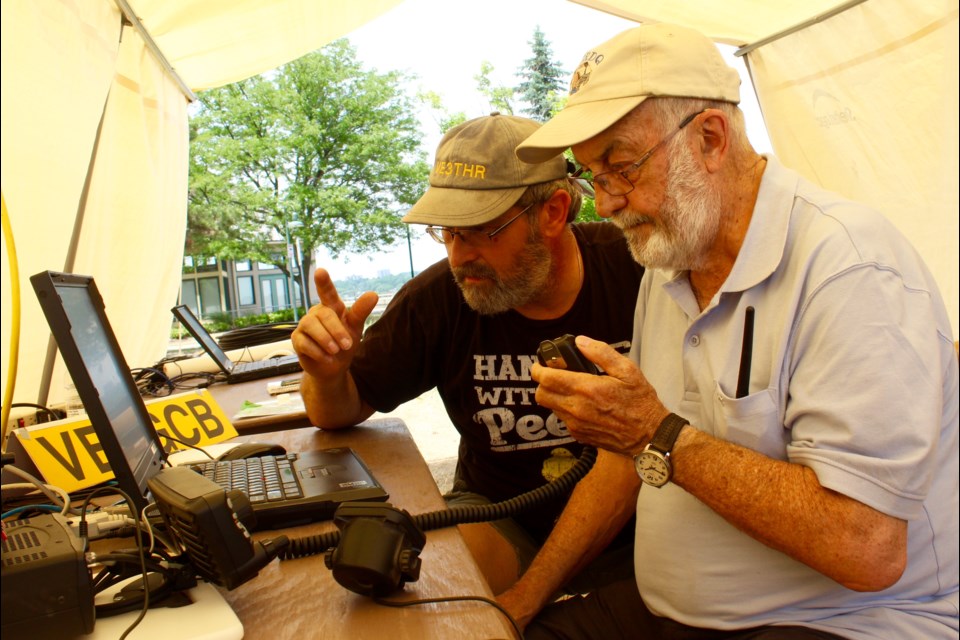The Barrie Amateur Radio Club has reached around the world, provided critical communication during local emergencies and even connected with space.
"Chris Hadfield, the first time he went up and he wanted to use a Canadian call (number) . . . it was our club that got him that call," said Brant Smith, president of the Barrie club. "One of the guys in the club that's been a Ham for a long time phoned the DOC and tried to fast track the paperwork because it was for Chris Hadfield."
Hadfield's uncle lives in Barrie and was a member of the amateur radio club.
"His uncle was the first person to contact him the first time he went up to the International Space Station," Smith said. "That contact was from Barrie and a few other guys were also able to get ahold of him, but as soon as the American's heard that he was on there up goes the beams with the high power and boom, that was it."
Ham radio operators in Barrie and over 1,600 stations across Canada and the US participated recently in a 24-hour Field Day, an opportunity to connect and test emergency preparedness.
Volunteers manned an emergency communication centre set up near the Southshore Centre throughout the night, with a goal of connecting with as many people and cities as possible. As the event drew to a close, a North American map showed dozens of contacts.
"We are ahead of the game this year," said Jason Tremblay, event coordinator.
The annual training exercise was a realistic situation with the radio club deploying operations as if there was an emergency. It was sponsored by the Amateur Radio Relay League (ARRL) and Radio Amateurs of Canada (RAC), involving hundreds of stations and thousands of operators transmitting under similar conditions.
"This is a test of the endurance and skill of the operators, as well as a learning experience for both operators and guests," Smith said. "The objective is to work as many stations as possible, on any and all amateur bands and to learn to operate in abnormal situations in less than optimal conditions.
Barrie's club, which currently has about 50 members, meets monthly and participates in local events. Plans are underway to expand a public communication service that will be demonstrated at events. Volunteers are also planning to participate by providing communication services to various groups and events.
"People can see who we are, get used to us and have an understanding of what our radios are capable of."
It will also be a test for those participating as they adapt to various locations and events.
It's a hobby that is growing in popularity.
"I think it's because the Internet is too easy," said Smith. "There's still a science and a mystique to ham radios that we are all learning about."
There's new technology to learn, speakers from various organizations including Transport Canada and Pearson International Airport, experimenting with equipment.
"A lot of the technology that you see today stems back to amateur radio . . . text messaging and everything," said Tremblay.
For example, global positioning systems now used in police cars and ambulances were developed by amateur radio guys.
"We invented that. It was our thing," he said.
"It's a hobby but its also an inspiration to a lot of people when it comes to taking the next step in communications. "
No experience is necessary to join the Barrie club, and a radio operators' course is offered every January for new members.
For more information, visit http://www.barriearc.com.



